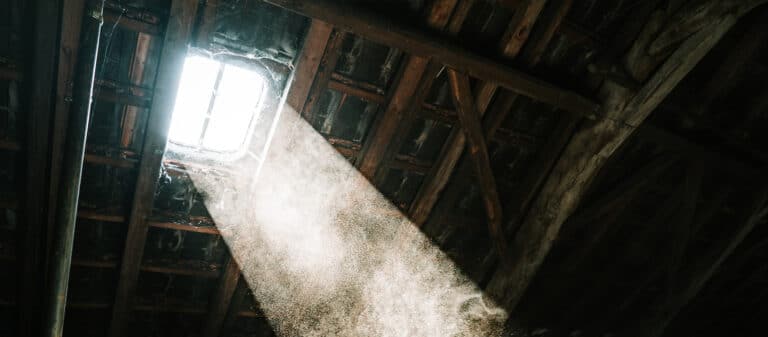Repairing cracked or sunken concrete can be a frustrating project, especially if you have recently installed or repaired said concrete.
Unfortunately, this is a problem that many NEPA residents run into fairly quickly after enlisting mudjacking services to repair a sunken concrete slab.
Far from providing long-lasting stability, the slab begins to resume cracking and sinking like it once did, forcing property owners to ask themselves, “What did I actually pay for?”
While mudjacking may offer some short-term cosmetic repairs for damaged concrete, it should not be trusted as a long-term solution.
In fact, several better alternatives are available, such as polyjacking, which we’ll discuss in this article.
What is Mudjacking?
Mudjacking, also known as slab jacking, is a process that involves pumping a slurry mixture of water, cement, and soil underneath a sunken concrete slab to raise it back to its original level.
The process of mudjacking is fairly invasive as large holes will need to be dug around the concrete to inject hundreds of pounds of this slurry directly into the earth.
Mudjacking is designed only to lift concrete but should not be considered a solution for crumbling or void formations underneath.
While this method can temporarily correct uneven surfaces, it has significant limitations that may lead to further issues down the road.
Why Property Owners Should Avoid Mudjacking
In our experience in concrete repair, mudjacking not only falls short of offering long-term concrete repair but can often cause more problems than it fixes. Let’s explore some of the reasons why we recommend that you should avoid mudjacking.
1. Temporary Fix Rather Than a Permanent Solution
Even mudjacking companies will admit that mudjacking is often a short-term, temporary solution to sunken or uneven concrete. This is why the service is marketed as a much cheaper alternative to long-term solutions like polyjacking.
Over time, the slurry material can erode, shift, or break down, causing the concrete to settle again. This means you may find yourself needing additional repairs sooner than expected.
In reality, mudjacking only masks problems with your concrete but does not actually solve them, such as filling voids.
2. Heavy Materials Can Worsen the Problem
Mudjacking can actually exacerbate problems associated with void formation and soil compaction by adding additional weight to the soil underneath and further causing it to sink.
This will make any future repairs that much more difficult and increase the cost of future projects.
3. Longer Curing Time and Extended Downtime
At least mudjacking is a quick and easy repair for uneven concrete–think again. After a mudjacking repair, you can expect to wait 24 to 48 hours before using the repaired area. This can be inconvenient, especially for driveways, sidewalks, or commercial properties where immediate access is needed.
On the flip side, polyurethane foam lifting allows for much faster curing times.
4. Potential for Future Voids and Instability
The main reason mudjacking is not guaranteed to last very long is that the slurry used is considered highly unstable.
After a few years, this soil, water, and cement mixture will degrade, causing voids to form in its very place and your concrete to sink once more.
5. Not Suitable for All Concrete Structures
Mudjacking is not an ideal solution for all types of concrete structures.
For instance, it may not be effective for repairing pool decks, foundation slabs, or other areas with high weight-bearing requirements. In such cases, alternative methods like polyurethane foam injection or full slab replacement may be more effective.
6. Messy and Disruptive Process
Perhaps one of the primary reasons why we caution property owners against mudjacking is because it is a messy, disruptive, and environmentally wasteful practice.
For one, mudjacking requires drilling multiple large holes in the concrete slab, which can be fairly noticeable once the process has ceased.
The injected material may also seep out from cracks or expansion joints, creating an unsightly appearance.
Finally, cleanup can be labor-intensive, and the finished result may not be aesthetically pleasing.
7. Less Precise Leveling Compared to Modern Alternatives
While mudjacking can lift concrete, it does not offer the same level of precision as other repair methods. If you hire a bad contractor, this can result in subpar work.
Conversely, polyurethane foam lifting expands to fill gaps and provides more accurate leveling, ensuring a more stable and even surface.
Alternative Concrete Repair Methods
Luckily, there are several alternatives to mudjacking that offer long-term stability and relief to your concrete disrepair woes.
Polyurethane foam injection (polyjacking) is by far the best alternative, providing a stable material that fills voids underneath sunken slabs and helps prop up the slab for several decades under ideal circumstances. Polyjacking only requires drilling two penny-sized holes in the slab and can be controlled to provide precise leveling for all affected slabs.
For more extreme damage, complete concrete replacement may be necessary if structural defects cannot be overcome.
Beware of Mudjacking
While mudjacking has been a widely used method for lifting concrete, it comes with significant disadvantages that make it a less effective long-term solution.
From temporary results and added weight to ongoing maintenance issues, there are many reasons to consider alternative concrete repair methods.
Polyurethane foam injection and other modern techniques provide more reliable, precise, and durable solutions for addressing uneven or sunken concrete. Before deciding on a repair method, consult with a professional to determine the best option for your specific needs.
FAQs
How long does mudjacking last?
Mudjacking is typically a temporary solution, lasting anywhere from 3 to 5 years, depending on soil conditions and environmental factors. Alternative methods, like polyurethane foam injection, offer longer-lasting results.
Can I DIY mudjacking for my concrete repair?
Furthermore, mudjacking requires specialized equipment and expertise, making it difficult to perform as a DIY project. Improper application can lead to uneven leveling or further concrete damage.
Is mudjacking more affordable than other concrete repair methods?
While mudjacking is initially more affordable, it often requires repeated repairs, making it more costly in the long run. Polyurethane foam lifting, although slightly more expensive upfront, provides better durability and fewer repeat repairs.











